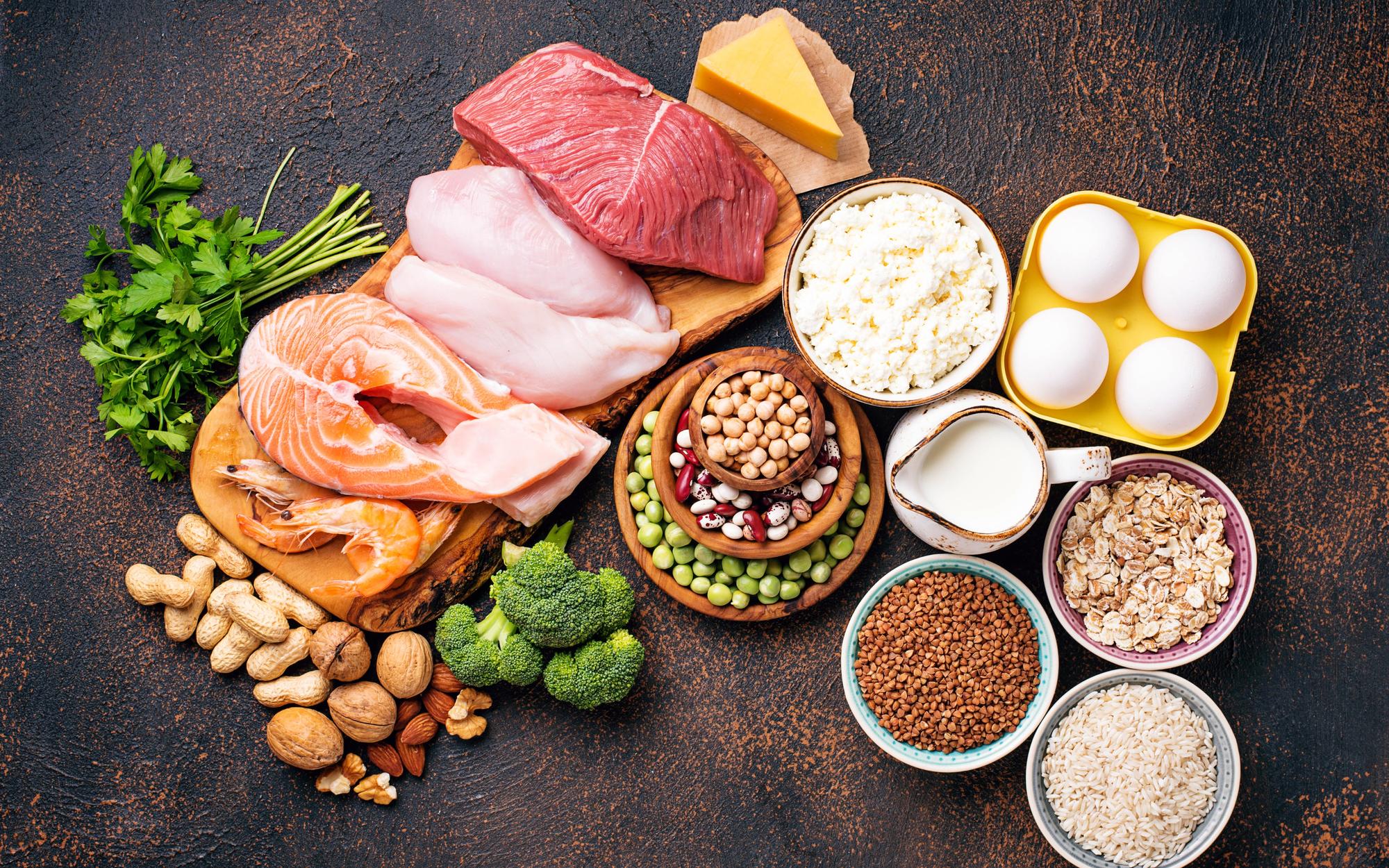Topic 1 – Do you know the difference between fresh red meat and processed red meat?
Topic 2 – Do you know the difference in fat percentage between cuts of red meat?
Topic 3 – What are the health benefits of red meat?
First: Which red meat are we talking about? It’s important to note that there are different types of cuts (e.g. knuckle, topside, flat, tenderloin, etc.). The difference between these lies mainly in the amount of fat. In addition, according to the scientific literature, processed red meat (e.g. bacon, ham, sausages, salami, canned meat) always has worse effects when compared to unprocessed red meat (in natura; beef, veal, lamb, mutton, pork, goat). This reinforces the need to prefer unprocessed red meat and, whenever possible, to vary the sources.
Therefore, preferring leaner, unprocessed cuts can be a way of keeping red meat on your plate more often, because many problems related to red meat are caused by excessive consumption of saturated fat.

Saturated fat increases cholesterol (LDL-c), known as “bad cholesterol”, which increases the formation of fatty plaques in our vessels. What does this mean? It’s as if our arteries were congested, preventing the blood from reaching its destination, causing the death of the body tissues that are irrigated by these blood vessels.
Second: How was the red meat prepared? Boiled, roasted and grilled preparations are always better than fried or breaded. Therefore, pay attention to the way it’s prepared.
Third: How much do you eat? It’s not simple to define a portion size, but quantities of around 100 g/day (considering a raw portion) seem to be adequate. In addition, it is suggested limiting consumption to 2-3 times a week.
Why is there so much concern about red meat?

Let’s get down to science: a scientific study published in the journal JAMA (Zhong et al., 2020), renowned for high-quality publications, showed that high consumption of fresh red meat increased the risk of cardiovascular disease by only 3%. Although the study draws attention to red meat consumption, some details are important. One of them is that the study failed to separate out the type of preparation of the red meat, for example, it didn’t differentiate whether it was fried, breaded, baked or grilled. Another problem is that the study was only carried out with people from the United States, whose dietary pattern is worse than that of Brazilians. Despite these limitations of the study, the results are interesting and guide us to consume red meat in moderation.
Other studies, however, have shown contradictory results. For example, a study published in Critical Reviews in Food Science and Nutrition showed no association between the consumption of fresh red meat and cases of ischemic stroke or coronary heart disease (de Medeiros et al., 2023). A very robust study published in the journal Lancet suggests that replacing processed red meat with fresh meat or poultry reduces the risk of type 2 diabetes mellitus (Li et al., 2024). Another robust study published in the Lancet also suggests that reducing the intake of processed red meat has positive effects (Kennedy, Alexander, Taillie, & Jaacks, 2024). What does all this mean? A slight warning sign. There’s no incentive to eat too much, but there’s also no need to exclude red meat from your plate. It is therefore essential to consume adequate quantities. Know
Know how to separate the wheat from the chaff
Scientific studies also evaluate the size of the effect (negative or positive) according to who consumes red meat. If you are healthy, the effect of red meat is small or non- existent. That’s why it’s essential to establish a healthy lifestyle, with good quality sleep and an adequate level of physical activity. If you are overweight, smoke or drink alcohol more often or have other metabolic diseases (e.g. diabetes mellitus), you need to be more careful. It’s
It’s not just about red meat!

No single food is the solely cause for a disease. The effects that food has on our health occur in combination. Therefore, a person who consumes a lot of red meat and no vegetables will have completely different effects from a person who consumes red meat and vegetables properly. Be aware of this and increase the variety of foods on your plate.
What is the current recommendation according to scientific literature?
Poultry and fish: preferable;
Fresh red meat: consume in moderation;
Processed red meat: not at all or occasionally;
Vegetables, leaves and legumes: constantly.
References
de Medeiros, G., Mesquita, G. X. B., Lima, S., Silva, D. F. O., de Azevedo, K. P. M., Pimenta,
I., . . . Piuvezam, G. (2023). Associations of the consumption of unprocessed red meat
and processed meat with the incidence of cardiovascular disease and mortality, and the
dose-response relationship: A systematic review and meta-analysis of cohort studies. Crit
Rev Food Sci Nutr, 63(27), 8443-8456. doi: 10.1080/10408398.2022.2058461
Kennedy, J., Alexander, P., Taillie, L. S., & Jaacks, L. M. (2024). Estimated effects of reductions
in processed meat consumption and unprocessed red meat consumption on occurrences of
type 2 diabetes, cardiovascular disease, colorectal cancer, and mortality in the USA: a
microsimulation study. Lancet Planet Health, 8(7), e441-e451. doi: 10.1016/S2542-
5196(24)00118-9
Li, C., Bishop, T. R. P., Imamura, F., Sharp, S. J., Pearce, M., Brage, S., . . . Wareham, N. J.
(2024). Meat consumption and incident type 2 diabetes: an individual-participant
federated meta-analysis of 1.97 million adults with 100 000 incident cases from 31
cohorts in 20 countries. Lancet Diabetes Endocrinol, 12(9), 619-630. doi:
10.1016/S2213-8587(24)00179-7
Zhong, V. W., Van Horn, L., Greenland, P., Carnethon, M. R., Ning, H., Wilkins, J. T., . . .
Allen, N. B. (2020). Associations of Processed Meat, Unprocessed Red Meat, Poultry, or
Fish Intake With Incident Cardiovascular Disease and All-Cause Mortality. JAMA Intern
Med, 180(4), 503-512. doi: 10.1001/jamainternmed.2019.6969





